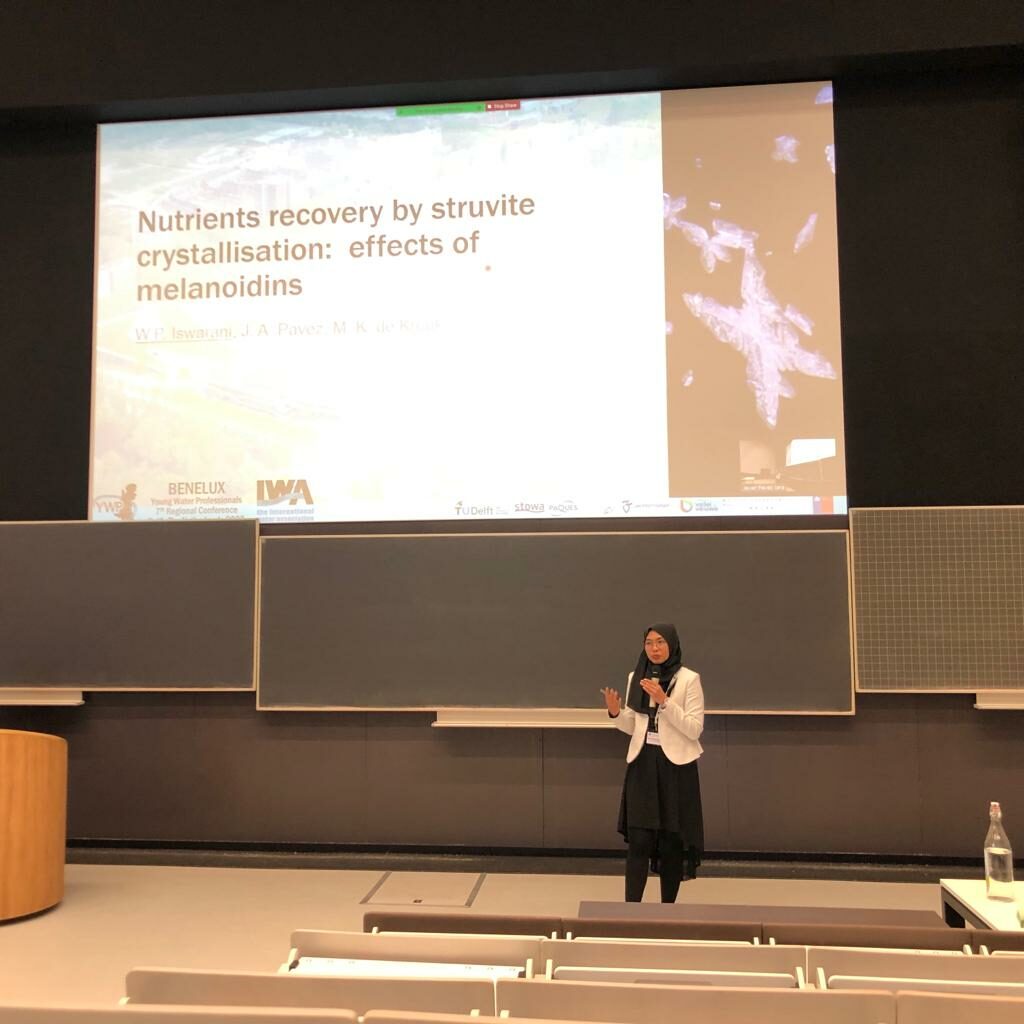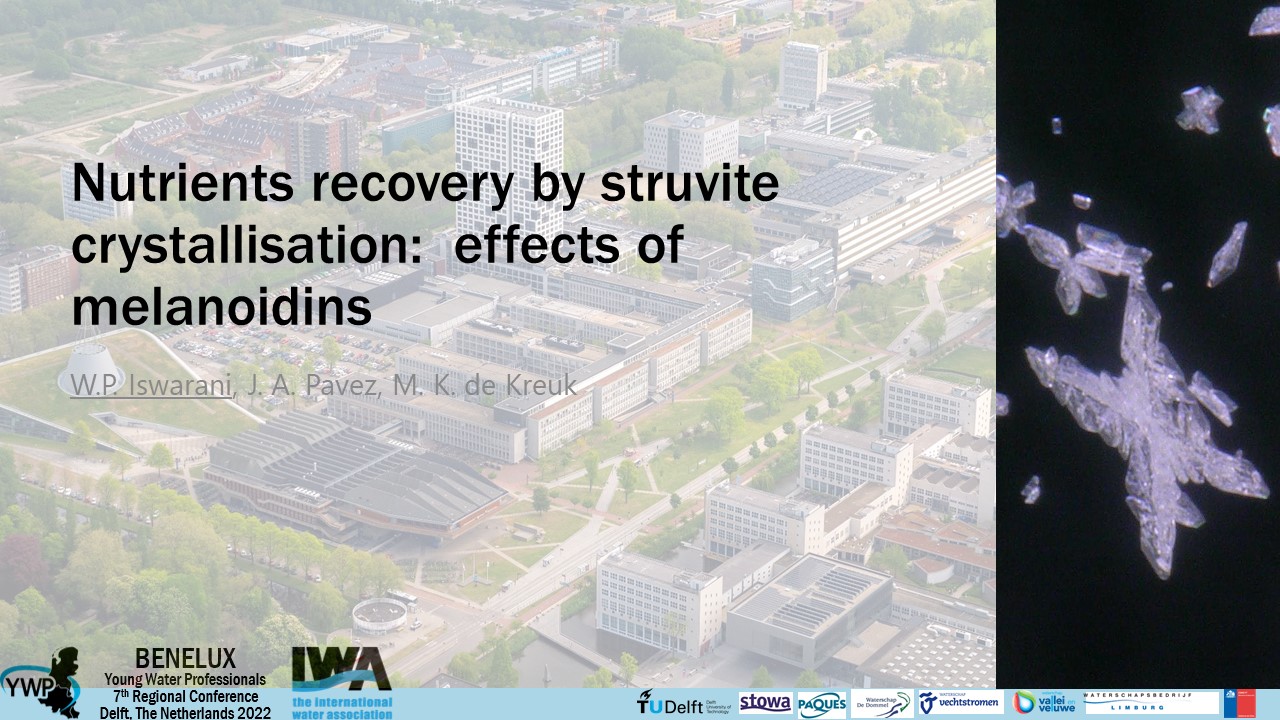At the beginning of April, I attended an international conference in Delft, The Netherlands. The conference was held by the Young Water Professional (YWP) BeNeLux chapter of the International Water Association (IWA). The conference took place in TU Delft, and lasted for 3 days. More than one hundred participants attended the conference. Even though it was hosted by BeNeLux chapter, the participants came from all over the world.
As the name suggested, the main theme of the conference was water. It is a broad theme indeed, therefore you could see anything related to water: from climate change to sludge treatment, from fancy AI in water treatment to socio-behavioural analysis related to water problems in a refugee camp. Various oral presentations were divided into 3 parallel sessions each day, next to poster presentations which can be explored at any time of day.
It was my very first conference, so to me, it was very special. I presented my research project entitled “Nutrients recovery by struvite crystallisation: effects of melanoidins”, which was part of my thesis research back in 2020. I never got to present my thesis in front of such a big audience in a real-life due to corona, therefore I was very nervous even though presenting is an activity that I do on a daily basis. Perhaps it was also because the audience was totally different people: many PhD and post-doc researchers, and even my professors attended the presentation.


To give a bit of an idea about my research: I investigated the relationship between melanoidins and struvite crystallisation. Melanoidins are refractory compounds generated in a high temperature and pressure pre-treatment technology for anaerobic digestion. Due to their presence, the supernatant from anaerobic digestion contains high organic matter, which can be disruptive to struvite crystallisation. Struvite crystallisation is a side-stream treatment, used to mainly remove phosphate and nitrogen, but the crystals can also be used as fertiliser. What were my main findings?
Melanoidins changed crystals morphology and decreased the diameter of crystals, nonetheless, melanoidins could maintain the purity of struvite from co-precipitation of heavy metals.
Iswarani, W. P, Pavez, J. A, de Kreuk, M. K., 2022
Other than sharing my research, of course, I also learned a lot from other participants. There is still so much to learn in the world of water, that is why I am grateful that I am still involved in education and research related to water. Some interesting research projects are as follows:
- The fate of microplastics in wastewater treatment plants in The Netherlands.
- Materials recovered from wastewater that can be used as biocomposite, biopolymer, etc.
- PHA (bioplastics) production from waste activated sludge
- Recovery of salts and minerals from coal mine wastewater
- Iron and phosphate recovery from anaerobic groundwater
- Modelling of green house gases emissions from wastewater treatment plants
- Removal of sodium and nutrients recovery from greenhouse wastewater
- Modelling of advanced oxidation process using ozone (O3) to remove micropollutants
- Recovery of sugars and water using reverse osmosis membrane
The projects listed above are only from the presentations that I attended (I mostly attended sessions related to wastewater treatment), but due to parallel sessions, I could not attend the other presentations in the two other rooms. The 3-days conference made me feel so inspired. I hope by sharing this, you will get inspired too 🙂 and feel free to contact me via email or Teams if you want to know more about my research project and anything related to (waste)water treatment!

Leave a Reply